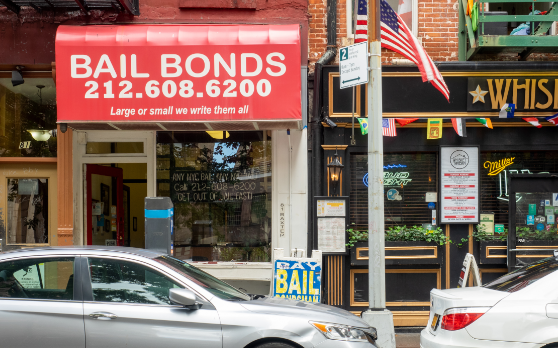
How New Jersey’s Cash Bail Reform Fared Against Fatal Violence
In 2017, New Jersey took a bold leap by enacting comprehensive bail reform, eliminating cash bail for most pretrial defendants. This groundbreaking policy aimed to reduce the number of individuals incarcerated simply because they couldn’t afford bail. However, the reform ignited a fierce debate, especially around public safety and violence against women.
Critics claimed it would unleash a wave of violence, particularly intimate partner violence (IPV), by enabling individuals accused of such crimes to walk free. But did these dire predictions come true? A recent study has the answers—and they may surprise you.
The Study: Fact-Checking the Fear
Researchers set out to evaluate whether New Jersey’s bail reform increased rates of fatal violence against women. Using synthetic control methods, the study compared New Jersey’s rates of IPV-related homicides, pregnancy-associated homicides, and overall homicides of adult women with those of 21 states that didn’t implement bail reform from 2015–2019.
The results were striking: there were no significant changes in rates of fatal violence against women in New Jersey after bail reform. These findings challenge the narrative that bail reform inherently endangers women. Instead, they suggest that reducing pretrial detention doesn’t compromise community safety—even for some of society’s most vulnerable groups.
Why It Matters: Violence Against Women as a Public Health Crisis
Violence against women is more than a crime—it’s a public health epidemic. Nearly one in two women in the U.S. experiences IPV during their lifetime, with IPV-related homicides accounting for a staggering 42% of all female homicides. Black, Indigenous, and Multiracial women bear a disproportionate burden, experiencing higher rates of IPV and related homicides than their White counterparts. Tragically, homicide is also one of the leading causes of death among pregnant and postpartum women, a grim statistic that underscores the intersection of violence and systemic inequities.
Despite these alarming figures, the U.S. has historically leaned on the criminal justice system to address IPV. This approach, including mandatory arrest laws, often exacerbates harm to survivors, especially those marginalized by race, immigration status, or socioeconomic status. Some saw Bail reform as a step backward, but this study flips that assumption on its head.
A Closer Look at the Reform
New Jersey’s bail reform replaced a cash-based system with a risk assessment tool that determines whether someone should be detained pretrial. The tool considers factors like the likelihood of re-offending or failing to appear in court, rather than focusing on their ability to pay bail. For IPV-related cases, prosecutors could still request pretrial detention, addressing concerns about potentially dangerous offenders being released.
The policy achieved its primary goal: pretrial incarceration in New Jersey dropped by 30% within two years, yet the feared surge in violence never materialized. Importantly, this reform has spurred dialogue about the broader impacts of pretrial detention, including its devastating effects on families and communities.
Beyond Bail: A Broader Public Health Perspective
While the study’s findings offer reassurance about the safety of bail reform, they also highlight the need for holistic, upstream solutions to violence against women. Experts argue that addressing IPV and fatal violence requires moving beyond criminalization to tackle root causes like poverty, housing instability, and systemic racism. For instance:
- Safe and affordable housing: Survivors of IPV often face homelessness when fleeing abusive relationships. Housing support can be a lifeline.
- Economic opportunities: Financial dependence is a major barrier for survivors seeking to leave violent relationships.
- Gender-equity education: School-based programs that teach healthy relationship skills can prevent IPV before it starts.
In addition to prevention, responses to IPV must center survivors’ needs. This includes trauma-informed healthcare, financial literacy programs, and community-based alternatives to the criminal justice system. Importantly, these solutions should be designed with input from survivors themselves, ensuring they are culturally and contextually appropriate.
What’s Next for Bail Reform?
New Jersey’s experience offers important lessons for other jurisdictions considering bail reform. First, decarceration policies can coexist with community safety, debunking a key argument from reform opponents. Second, while risk assessment tools can be effective, they must be scrutinized for racial bias. Even after bail reform, racial disparities persist: Black individuals remain significantly overrepresented in New Jersey’s jail population.
Future research could explore how these tools can better serve marginalized populations and whether additional safeguards are needed to protect IPV survivors. As bail reform becomes a hot topic nationwide, it’s crucial to build policies rooted in data and equity.
Join the Conversation
What do you think of New Jersey’s bail reform experiment? How can public health and the criminal justice system work together to address IPV more effectively? Share your thoughts in the comments or on social media. Here are some questions to spark discussion:
- What role should public health play in addressing violence against women?
- How can policymakers ensure bail reform balances equity and safety?
- What upstream interventions could prevent IPV more effectively than criminalization?
Time is Running Out – Join the Public Health Movement Now!
Get trusted insights that help you drive change in your community. Subscribe to our free newsletter today and stay informed.
🔥 Your action matters—share this blog right now to grow our network of changemakers!



